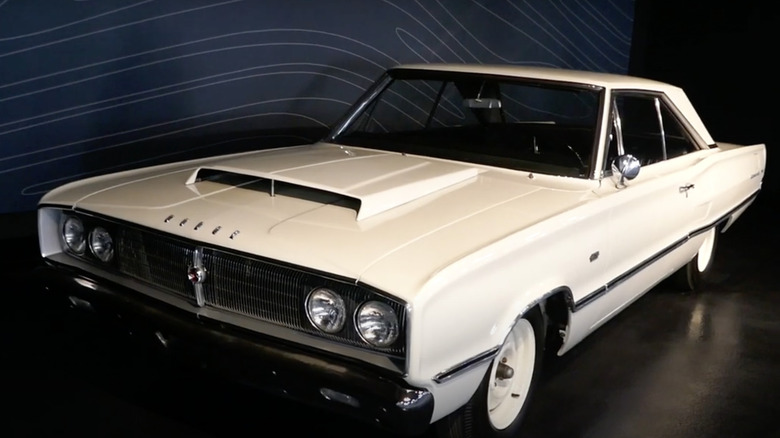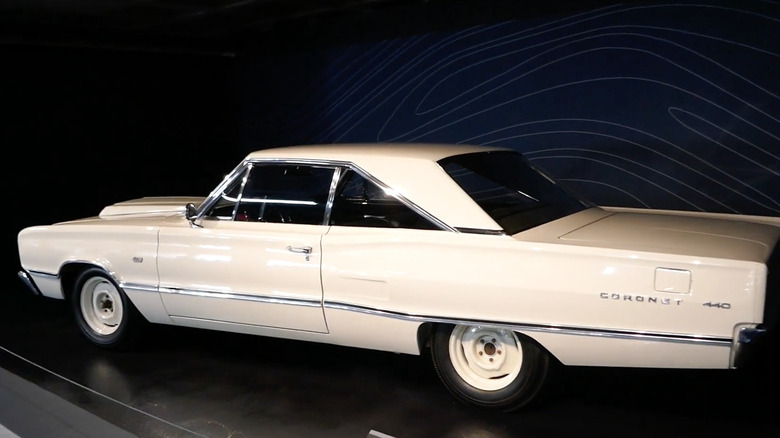Here's What Made The '67 Dodge Coronet WO23 The Ultimate Street Machine
Before Corporate Average Fuel Economy requirements were instituted in 1975, American car manufacturers focused their time and energy on building cars that delivered eye-popping performance. Many of these models were geared to customers who used their cars to commute and run errands during the week and raced at local drag strips on weekends.
Stock car racing also spawned the marketing maxim, "Win on Sunday, sell on Monday." To run in the National Hot Rod Association's Super Stock class that began in 1967, a car had to use the same engine and carburetor as the ones available to anyone who walked into a dealership during the week.
That same year, Dodge unleashed the Super Stock Coronet on the world, with an option package coded WO23 that was meant specifically for weekend drag racers. The brand's Plymouth Mopar cousins used the RO23 designation for the same package. Instead of a typical set of options that added features like power accessories or cabin comforts, the WO23 and RO23 packages included strictly performance-enhancing features.
The WO23 Coronet had a 426-cubic inch HEMI
Topping that list was the NASCAR-bred 426-cubic inch HEMI V8, which went into each of the 55 factory-built Super Stock Dodges built that year. The interior of the WO23 Coronet had the same bench seats as the Coronet 440, but the WO23's carpeting was thinner and sound deadening materials were discarded.
Where most drag strip-focused cars used larger brakes in front because they bore 70% of the load, WO23 Dodges had 11-inch brakes in back and 10-inchers in front to keep more weight on the rear axle for better traction. The battery was also relocated to the trunk to make the Coronet stick to the road a little better.
Even further, smaller torsion bars were used on WO23 cars, and the front anti-roll bar was eliminated to make the weight transfer to the rear during acceleration more pronounced. The rear axle had an acceleration-friendly 4.88:1 gear ratio and Dodge's Sure-Grip limited-slip differential.
All these features made the '67 Coronet WO23 an absolute beast in a straight line. It could go from 0-60 in an astonishing five seconds flat, cover a quarter mile in 13.5 seconds, and reach a top speed of 140 miles per hour. Those numbers were downright humbling to the base version of the 1967 Pontiac Firebird, which took 7.5 seconds to get to 60 miles per hour and 15.4 seconds to cover a quarter mile.

